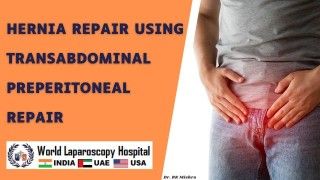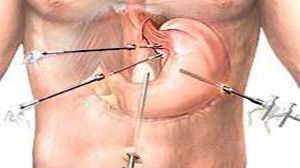Advancements in Fully Absorbable Mesh for Hernia Repair: Key Insights from WALS 2025
Add to
Share
149 views
Report
1 month ago
Description
Advancements in fully absorbable mesh technologies for hernia repair have been a focal point in recent surgical innovations. These developments aim to enhance patient outcomes by reducing complications associated with permanent synthetic meshes. The World Association of Laparoscopic Surgeons (WALS) 2025 conference highlighted several key insights into these advancements. Understanding Fully Absorbable Meshes Fully absorbable meshes are designed to provide temporary support to the abdominal wall during the healing process after hernia repair. Unlike permanent synthetic meshes, they gradually degrade and are absorbed by the body, minimizing long-term foreign material presence and potentially reducing chronic complications. Phasix™ Mesh: A Pioneering Solution One prominent example of fully absorbable mesh is Phasix™ Mesh, composed of poly-4-hydroxybutyrate (P4HB), a biologically derived, fully resorbable material. This mesh offers a monofilament scaffold that facilitates rapid tissue incorporation, providing the initial strength of a synthetic mesh while promoting natural tissue remodeling. Phasix™ Mesh is designed to degrade predictably within 12 to 18 months, transferring load to native tissue over time and resulting in a durable repair with over three times the strength of the native abdominal wall. Clinical Evaluations and Outcomes Clinical studies have assessed the efficacy of fully absorbable meshes like Phasix™ in various hernia repair scenarios: - Laparoscopic Inguinal Hernia Repair: A pilot study involving 15 patients undergoing transabdominal preperitoneal (TAPP) inguinal hernia repair using P4HB mesh reported no recurrences or mesh sensation over a 30-month follow-up. Only one patient experienced mild chronic inguinal pain for one year without activity restrictions, suggesting that P4HB mesh is safe and may reduce chronic pain and discomfort compared to permanent meshes. - Complex Abdominal Wall Defects: A systematic review and meta-analysis of animal studies indicated that fiber-based synthetic materials like P4HB exhibit favorable remodeling and regenerative properties. These materials showed better tissue infiltration and neovascularization compared to porcine acellular dermal matrices, highlighting their potential in complex hernia repairs. Innovations in Resorbable Mesh Technologies The field has also seen the introduction of new resorbable mesh technologies: - Transorb™ Self-Gripping Resorbable Mesh: This mesh represents a significant advancement, combining ProGrip™ technology with resorbable materials. Designed for higher tensile strength and stronger tissue attachment, Transorb™ provides the necessary support during the critical healing period and is gradually absorbed by the body, potentially reducing the risk of infection and post-surgery complications associated with permanent meshes. Future Directions and Considerations While fully absorbable meshes offer promising benefits, ongoing research is essential to optimize their applications: - Long-Term Outcomes: Further studies with larger patient cohorts and extended follow-up periods are needed to fully understand the long-term efficacy and safety of fully absorbable meshes in various hernia repair contexts. - Comparative Effectiveness: Direct comparisons between different types of absorbable meshes and traditional permanent meshes will help delineate specific scenarios where absorbable options provide the most benefit. - Patient Selection: Identifying patient populations that would benefit most from fully absorbable meshes, such as those at higher risk for complications from permanent implants, is crucial for personalized surgical approaches. Conclusion The advancements in fully absorbable mesh technologies, as highlighted at the WALS 2025 conference, represent a significant step forward in hernia repair. Meshes like Phasix™ and Transorb™ offer the potential for effective repairs with reduced long-term complications, aligning with the ongoing trend toward improving patient outcomes through innovative surgical materials. Continued research and clinical evaluations will further define their roles in hernia surgery.
Similar Videos






